The Dracaena genus includes many different species that are popular as houseplants.
But did you know that all of them can make your cat or dog sick if he or she ingests any part of the leaves, stems, bark, or roots?
Fortunately, dracaena is not a highly toxic houseplant, and your pet’s odds of recovery after mild poisoning are very good.
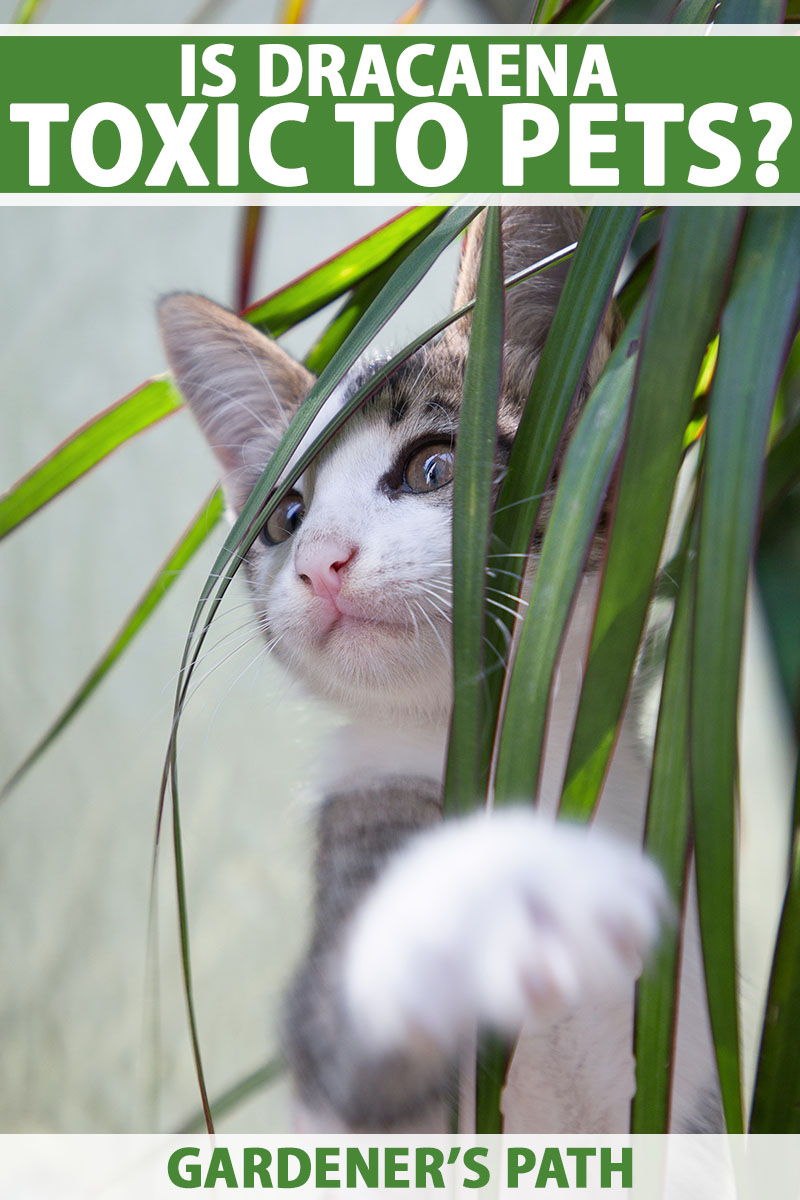
We link to vendors to help you find relevant products. If you buy from one of our links, we may earn a commission.
However, all of the pet owners I know shudder at the thought of pussy or fido undergoing any suffering after they opted to make a meal of one of their houseplants.
As an added nuisance, this plant is even more tempting to cats than most, because it looks like grass.
And you know how cats and dogs love to graze on grass! Fortunately, their bitterness helps to serve as a deterrent.
In this guide, we will go over the symptoms and treatment for dracaena poisoning in your pets, and what exactly it is that makes these houseplants mildly toxic to your fur babies.
What You’ll Learn
Saponins: When Soap is a Bad Thing
The guilty chemical that causes so much pain in animals is called a saponin.
That comes from the Latin word “sapon” meaning soap, and saponins foam when they are shaken with water.
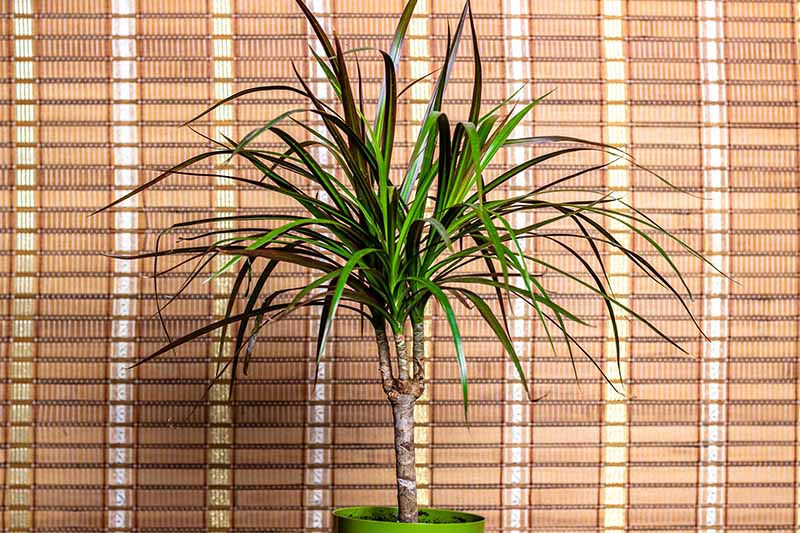
This has even led to the naming of D. mannii as the West African soap tree.
A number of different types of saponins have been isolated from plants in the Dracaena genus.
Different species of this genus can have different combinations of saponins.
These chemicals vary in their degree of toxicity. Some of them can cause animals to become extremely ill, while others have little effect.
Many of the dracaena saponins are steroids and contribute to the use of this plant as a form of traditional medicine in west Africa.
Some saponins are used industrially as detergents, and foam for fire extinguishers.
But eating them, well, that’s really not recommended.
Symptoms of Dracaena Poisoning in Pets
There is a good chance that your pet could be nibbling at your plants behind your back. (Shocking!)
If you notice bits missing, or you have reason to believe your pets have been making midnight snacks of the greenery in the corner, after taking the following steps it may be a good idea to reconsider which types of flora you choose to grow indoors, for the benefit of the animals.
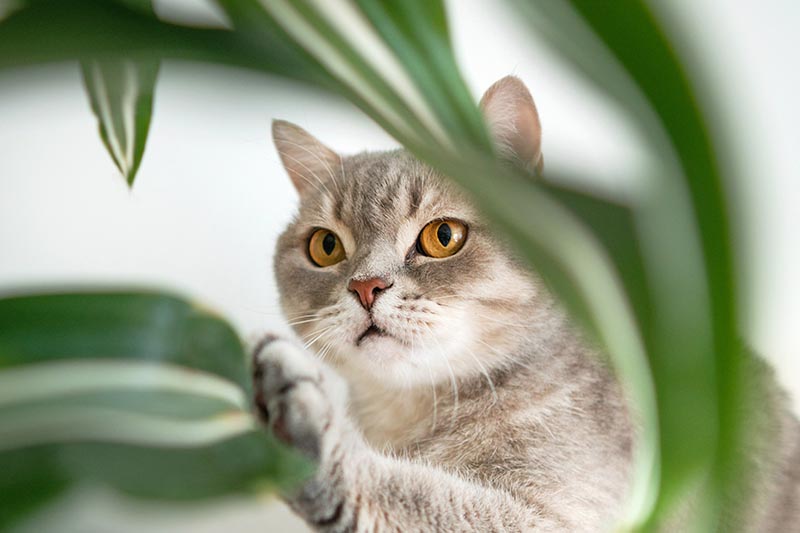
It is a huge help if you know what to look for if your pet has ingested a poisonous houseplant.
With dracaena, a mildly toxic plant, adverse symptoms after ingestion include:
- Abdominal pain
- Depression
- Diarrhea
- Dilated pupils (cats)
- Excessive drooling
- Fast heartbeat
- Incoordination
- Stumbling
- Vomiting
- Weakness
You should call your vet immediately if your pet has ingested dracaena.
If your cat or dog has one or more of these symptoms, there is a good chance that he or she will need emergency veterinary care.
It can take 12-24 hours for the symptoms to stop, and this could leave pussy or fido severely dehydrated and suffering from an electrolyte imbalance. Your vet can help to correct these issues.
Treatment
At this point, you are probably asking yourself, “What will she have to go through to get better?”
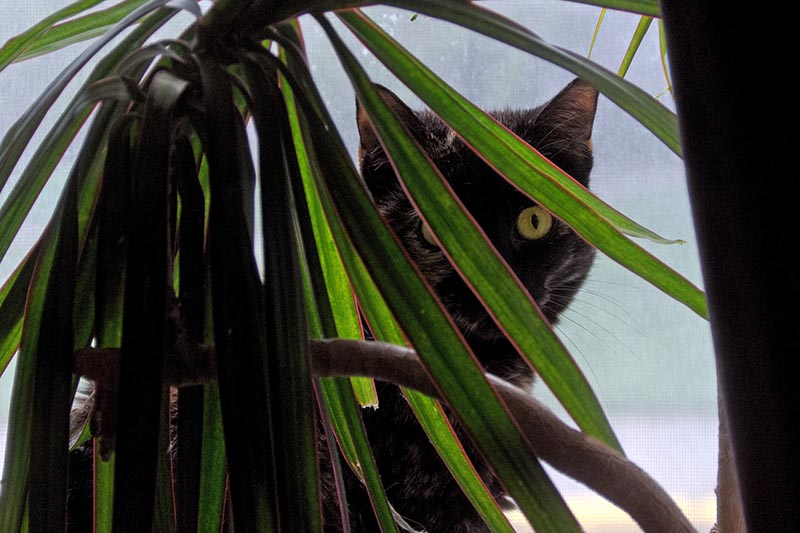
There are actually two answers to that question. The first has to do with the toxins in dracaena, and the other is about the plant itself.
Even if the plant didn’t contain any toxins, the leaves and stems would still irritate your pet’s stomach.
Intensive Fluids
If your pet has been vomiting for a lengthy period, she may have become dehydrated.
Severe dehydration can require hospitalization, so that she can be given electrolytes and intravenous fluids.
Induction of Vomiting
If your cat ingested dracaena leaves and is struggling to eliminate them, your vet can induce vomiting. Do not try to induce vomiting at home.
Recovery
Fortunately, no deaths have been reported after pets have eaten D. marginata, one of the commonly grown species of this plant.
With the help of your vet, your cat or dog should make a quick recovery within 24 hours of having eaten any dracaena parts.
The symptoms should stop as soon as all the plant materials (leaves or bark) have been eliminated, either orally or rectally.
Your Pet May Need Some Nurturing
You will probably want to nurture your pet after it has been through such an ordeal.
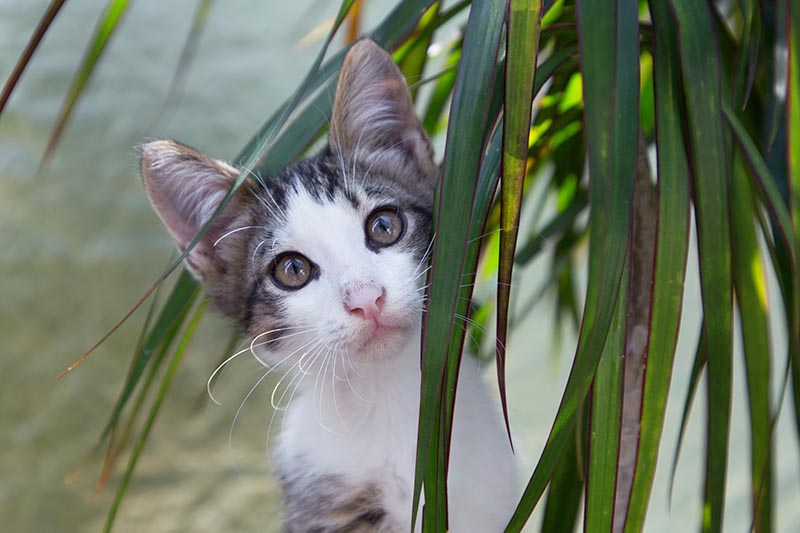
However, with some rest, he or she should make a full recovery.
To be on the safe side, you should consider keeping your dracaena plant out of reach from now on.
Has your cat or dog nibbled on your dracaena? If so, let us know how he or she fared in the comments section below.
And for more information about growing dracaena, check out these guides next:
- How to Grow and Care for Dracaena
- How to Grow and Train Dracaena Plants as Bonsai
- How to Grow and Care for Lucky Bamboo Houseplants
© Ask the Experts, LLC. ALL RIGHTS RESERVED. See our TOS for more details. Uncredited photos: Shutterstock. With additional writing and editing by Allison Sidhu.
The staff at Gardener’s Path are not medical or veterinary professionals and this article should not be construed as medical advice intended to assess, diagnose, prescribe, or promise cure. Gardener’s Path and Ask the Experts, LLC assume no liability for the use or misuse of the material presented above. Always consult with a veterinarian if your animals are displaying symptoms of toxicity.
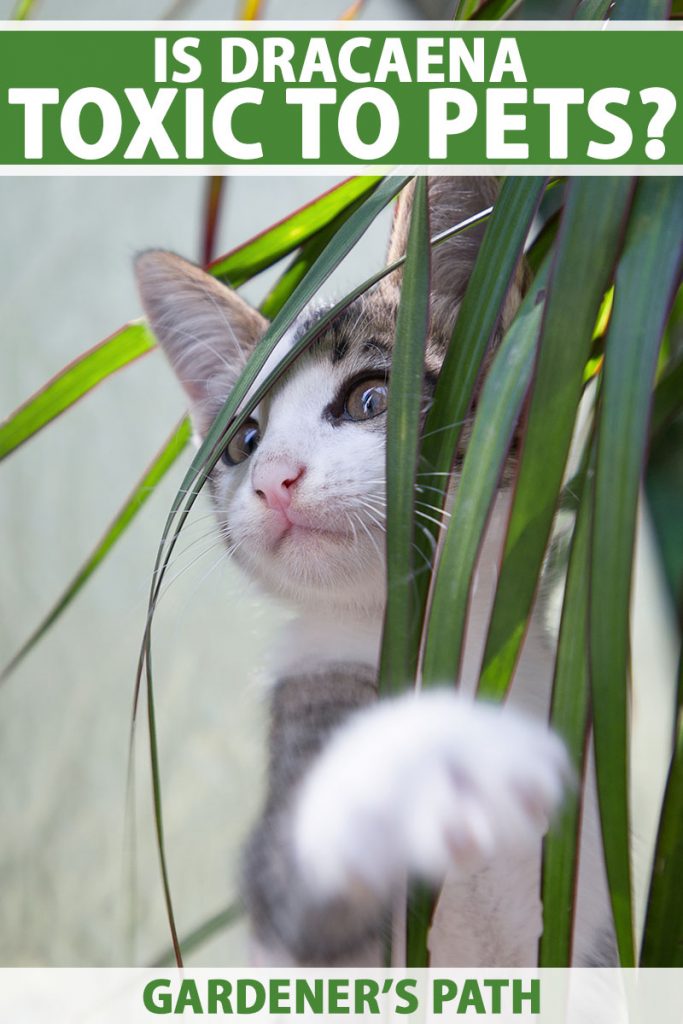


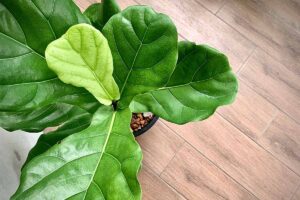
Saponins are common medicinal chemical, such as in ginseng. As you point out, dracaena is used medicinally. Saponins are known as a treatment for a wide variety of issues: cancer, arthritis, osteoporosis, high cholesterol, inflammation, etc. My cat has gotten into the habit of eating dracaena leaves. She loves them and seems quite excited in munching them, but never shows any ill effects. She doesn’t vomit, drool, get lethargic, lose appetite, etc. Actually, she is quite a healthy and spunky cat. Maybe cats are drawn to it as self-medication in dealing with parasites and bacteria. But when I look at… Read more »
My cat has nibbled on our dragon tree twice and both times spend >24 hours vomiting bloody vomit, inability to eat or drink. The first time we went to the emergency vet not realizing that it was caused by the plant in our house. The 2nd time it happened I read up on all of our plants again and we then realized what was happening and got rid of the plant and just kept an eye on our kitty for a while.
Unfortunately, I lost my dog after she had a chew fest with the dracaena marginata plant in my home. 2 days of iv fluids, then at home she was still on anti-neausea pills. She appeared to be slowly coming around, only to wake on morning to find her taking her last breaths. Devastating drive to the ER only for them to tell me she’s gone. 80lb, 5yr old Corso Mix. ???? I miss her terribly and question everything every day of what we missed….a death that didn’t need to happen.
Oh Kimberly I’m so, so sorry for your loss. What a devastating outcome for you and your beautiful dog.
Please don’t ever try to induce vomiting in cats with hydrogen peroxide. No veterinarian would ever induce vomiting that way. Working at an animal ER we’ve seen cats almost die from the reaction they have to owners giving hydrogen peroxide to induce vomiting. Hydrogen peroxide is considered very toxic to cats.
Thanks for the feedback Amy, we certainly don’t suggest that pet guardians administer hydrogen peroxide – I have removed the reference to that in case it’s confusing to other readers.